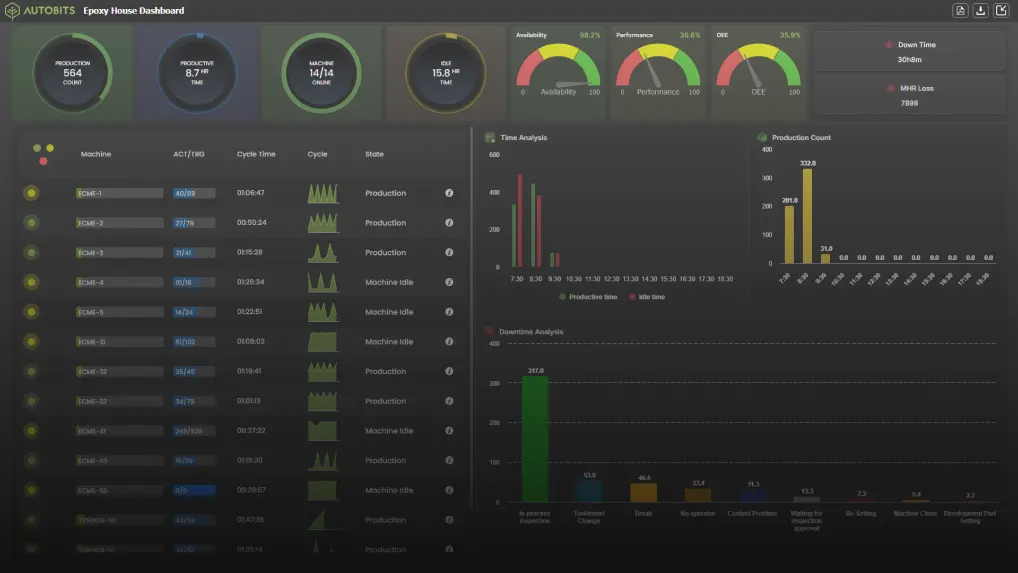In the world of Industry 4.0, the efficient use of energy is crucial for businesses to remain competitive. One important aspect of energy efficiency is maintaining a good power factor. Power factor is the ratio between the real power used and the apparent power drawn by an electrical load. This ratio is a measure of how effectively electrical power is used to perform useful work from the supplied power.
In this blog post, we will discuss the causes of power factor and the benefits of maintaining a good power factor. We will also explore how Autobits Factory metrics solution with Autobits Smart supervisor gateway can help businesses monitor and control their power factor.
Causes of Power Factor
The cause of power factor can be attributed to the presence of reactive power in electrical systems. Reactive power is the power demanded by the load and returned to the power source. This reactive power can cause a lag between the voltage and the current, resulting in a low power factor. A low power factor can cause inefficiencies in the electrical system, leading to increased energy consumption and higher electricity bills.
Lagging Power Factor
A lagging power factor occurs when the load is inductive, meaning that it requires more reactive power to operate. This can be caused by devices such as electric motors, transformers, and fluorescent lights. A lagging power factor can result in decreased system efficiency and increased energy costs.
Leading Power Factor
A leading power factor occurs when the load is capacitive, meaning that it produces more reactive power than it requires. This can be caused by devices such as capacitors and some types of lighting. A leading power factor can result in increased system efficiency, but it can also cause voltage instability and damage to equipment.
Power Factor Control
To maintain a good power factor, businesses can implement power factor correction techniques. Power factor correction involves adding capacitance to the electrical system to offset the inductive loads and improve the power factor. Capacitors are the most common way of achieving power factor correction. By adding capacitors to the system, the reactive power demand is reduced, resulting in a higher power factor.
Benefits of Maintaining a Good Power Factor
Maintaining a good power factor offers many benefits to businesses. Firstly, a good power factor reduces the amount of copper losses in the transmission system. This can result in energy savings and decreased maintenance costs. Secondly, a good power factor makes it easier to regulate voltage and control reactive power. This can lead to improved system stability and increased reliability. Thirdly, a good power factor increases system efficiency by reducing power consumption. This can result in decreased electricity bills and a reduced carbon footprint. Finally, a good power factor can provide businesses with extra KVA from the same existing supply.
Autobits Factory Metrics Solution with Autobits Smart Supervisor Gateway
To help businesses monitor and control their power factor, Autobits offers the Factory Metrics solution with Autobits Smart Supervisor Gateway. This solution provides businesses with reliable, flexible, and safe power factor monitoring. The Autobits Smart Supervisor Gateway can monitor and control power factor in real-time, providing businesses with valuable insights into their energy usage. By using the IoT, the power factor monitored values are sent through the web link over the internet, and the continuously updated data is stored for future analysis and operation.
Call to Action
In conclusion, maintaining a good power factor is essential for businesses to remain competitive in the modern era. A good power factor can result in decreased energy costs, increased system efficiency, and a reduced carbon footprint. To help businesses achieve these benefits, Autobits offers the Factory Metrics solution with Autobits Smart Supervisor Gateway. This solution provides businesses with reliable, flexible, and safe power factor monitoring. If you are interested in learning more about this.





